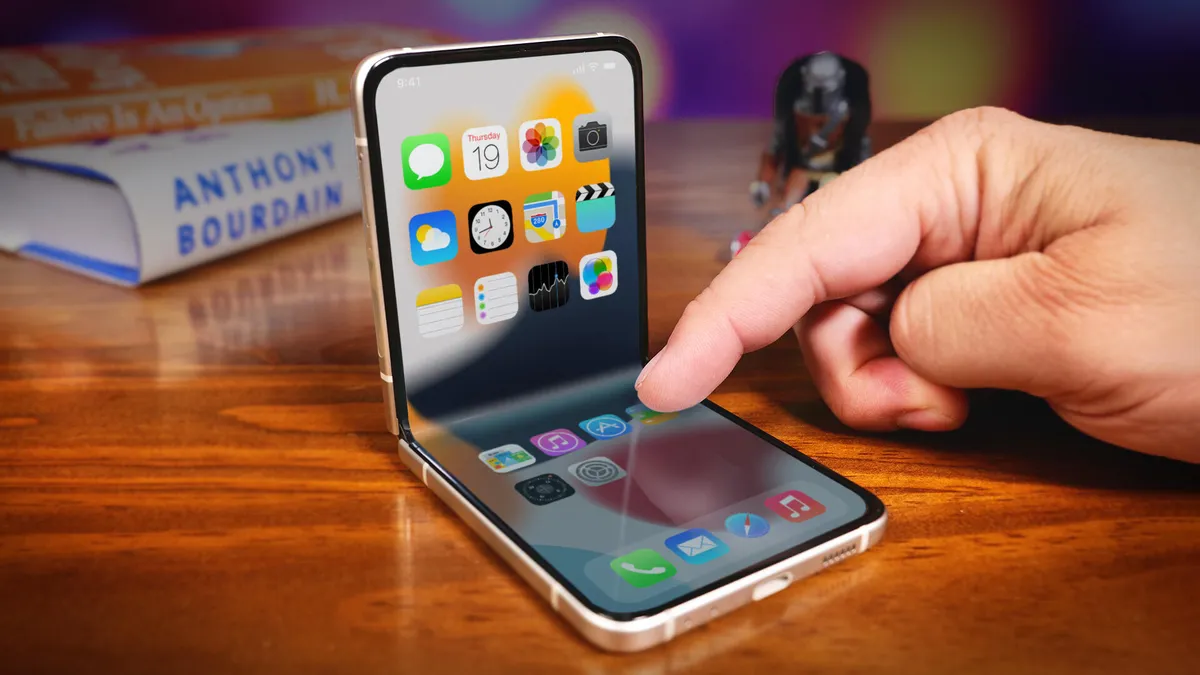The tech world has been buzzing for years about the prospect of a foldable iPhone. Will Apple finally join the ranks of manufacturers offering bendable devices? The answer, as always with Apple’s secretive product development, remains shrouded in mystery. While whispers and predictions abound, solid confirmation is scarce, leaving us to piece together the puzzle from various industry analysts and reports.
The latest murmurs suggest that a foldable iPhone is still very much in the planning stages at Apple. This comes from well-known Apple analyst Ming-Chi Kuo, who has a track record of providing relatively accurate insights into Apple’s upcoming products. While earlier interpretations of his reports suggested a potential mass production start in the latter half of 2025, a corrected version of his analysis clarifies that the project remains under development.
This isn’t the first time we’ve heard timelines for a foldable iPhone. Back in 2021, Kuo himself suggested a potential launch in 2025 or later. Display analyst Ross Young echoed this sentiment in 2022, indicating a delay until 2025. These predictions painted a picture of a potential launch in the mid-2020s, fueling excitement among Apple enthusiasts.
However, not all analysts agree on this timeline. Jeff Pu, another respected voice in the industry, believes a foldable iPhone might not appear until late 2026. TrendForce, a market research firm, offers an even later prediction of 2027. Adding to the mix, reports from The Information suggest Apple might be exploring a clamshell-style foldable design, potentially arriving as early as 2026. This divergence in predictions highlights the inherent uncertainty surrounding Apple’s plans.
The variety of projected release dates paints a complex picture. Is Apple aiming for a 2025 launch but facing development challenges? Or is the project still in its early phases, with a release further down the line? The lack of concrete information leaves room for speculation and interpretation.
One interesting point raised in recent discussions is the potential use of eSIM-only technology in the foldable iPhone, mirroring the rumored approach for the upcoming ultra-slim iPhone 17. This could pose challenges in certain markets, particularly China, where physical SIM card support remains prevalent. Apple might need to adapt its design to accommodate physical SIM cards in these regions to ensure broader market acceptance.
Beyond the foldable iPhone, the ultra-slim iPhone 17 is also generating discussion. While some anticipate higher sales volumes for this model compared to the iPhone Plus, concerns have been raised about its potential market impact. Some analysts suggest that downgraded components combined with a high price point and a user experience similar to existing models might limit its overall contribution to iPhone sales. This raises questions about Apple’s strategy for this particular device and its potential appeal to consumers.
The development of a foldable iPhone is undoubtedly a complex undertaking. Apple is known for its meticulous approach to product design and engineering, and it’s likely that they are taking their time to ensure a polished and innovative product. The company is unlikely to rush a foldable device to market simply to compete with other manufacturers. They will want to introduce a device that truly stands out and offers a unique user experience.
In conclusion, the foldable iPhone remains an enigma. While rumors and predictions continue to circulate, the actual launch date and specific features remain shrouded in secrecy. The conflicting timelines from various analysts underscore the uncertainty surrounding this highly anticipated device. Whether it arrives in 2025, 2026, 2027, or even later, one thing is certain: the tech world will be watching closely for any official word from Apple. Until then, we can only speculate and eagerly await the potential unveiling of this groundbreaking device.
